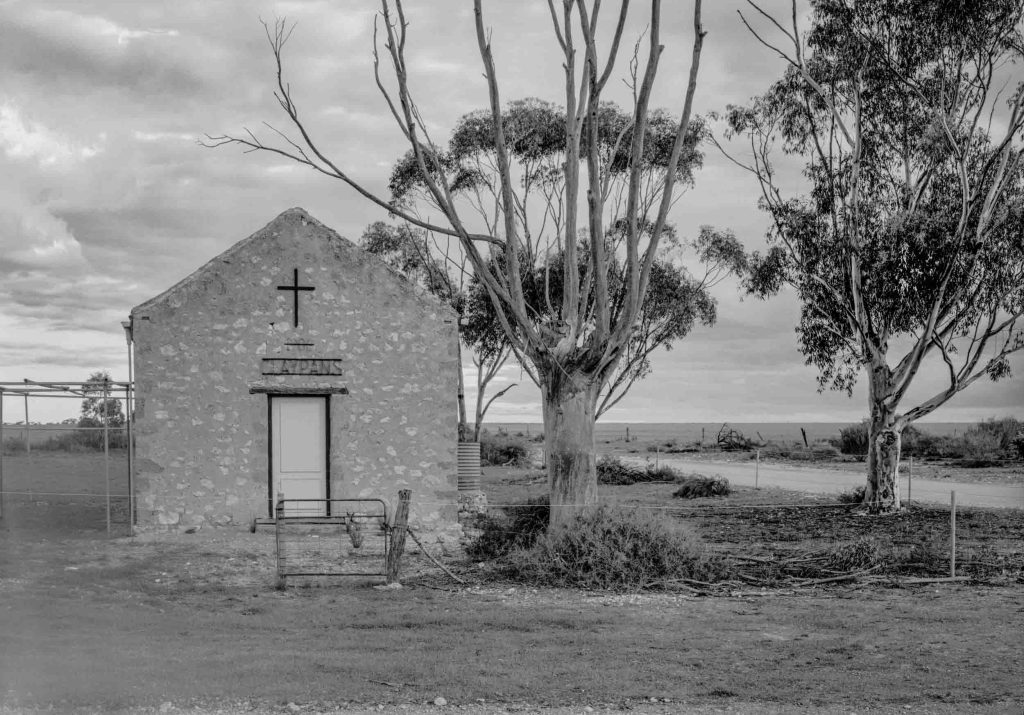One of the strengths of the photograph is that it brings back the past in a routine and repeatable way that is easily accessible to almost anyone. It mediates the way the world has gone by, which is then interpreted by the viewer. It opens up history as it were, thereby allowing us to remember and interpret the past that has been forgotten.
Photographs can be powerful triggers for memories of our past — they can provoke involuntary memories which recall to us those events we have forgotten . Photographs, in transporting us back to the past, help us to relive our emotional memories.

The above image of the Claypans Methodist church built in 1906 was made on an earlier phototrip to nearby Galga and Copeville. In the current context of the digitalization of visual culture we can begin to interpret the rhetoric of this b+w image through critically engaging with the memory of the white settler past . A critical engagement is needed because rural Australia was generally seen as pre-modern, rather than it being an integral part of Australia’s modernity.
The settler memories are of drought, dust, endurance in a harsh climate, plagues of rabbits and mice, and community perseverance in a marginal country with low rainfall. This is ‘struggle country.’ These stories suggests that photography is part of the long tradition of the art of memory (mnemonics), rather than being a document of an old church in a landscape.


[…] 1 2Tags:hauntology history South Australia Previous PostClaypans: memories + history […]